Developmental dynamics of piriform cortex
- PMID: 21041199
- PMCID: PMC3140179
- DOI: 10.1093/cercor/bhq199
Developmental dynamics of piriform cortex
Abstract
The piriform cortex (PCX) is a trilaminar paleocortex that is of interest for its role in odor coding and as a model for studying general principles of cortical sensory processing. While the structure of the mature PCX has been well characterized, its development is poorly understood. Notably, the kinetics as well as the cellular and morphological basis of the postnatal events that shape the PCX remain unknown. We followed the cellular fates of early- versus late-born cells in layer II of the anterior PCX, with a focus on the molecular maturation of pyramidal cells and the kinetics of their differentiation. We showed that: 1) early-born pyramidal cells differentiate more rapidly than late-born cells and 2) the position of pyramidal cells within the thickness of layer II determines the kinetics of their molecular maturation. We then examined the postnatal development of cortical lamination and showed that the establishment of inhibitory networks in the PCX proceeds through an increase in the density of inhibitory synapses despite a decrease in the number of interneurons. Together, our results provide a more comprehensive view of the postnatal development of the anterior PCX and reveal both similarities and differences in the development of this paleocortex versus the neocortex.
Figures

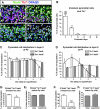

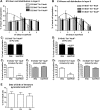
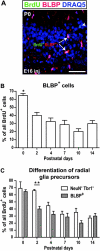

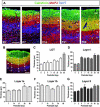

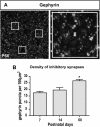

Similar articles
-
Excitatory projection neuron subtypes control the distribution of local inhibitory interneurons in the cerebral cortex.Neuron. 2011 Feb 24;69(4):763-79. doi: 10.1016/j.neuron.2011.01.015. Neuron. 2011. PMID: 21338885 Free PMC article.
-
New pool of cortical interneuron precursors in the early postnatal dorsal white matter.Cereb Cortex. 2012 Jan;22(1):86-98. doi: 10.1093/cercor/bhr086. Epub 2011 May 26. Cereb Cortex. 2012. PMID: 21616983
-
Early postnatal migration and development of layer II pyramidal neurons in the rodent cingulate/retrosplenial cortex.Cereb Cortex. 2012 Jan;22(1):144-57. doi: 10.1093/cercor/bhr097. Epub 2011 May 30. Cereb Cortex. 2012. PMID: 21625013
-
Robo1 regulates the migration and laminar distribution of upper-layer pyramidal neurons of the cerebral cortex.Cereb Cortex. 2013 Jun;23(6):1495-508. doi: 10.1093/cercor/bhs141. Epub 2012 Jun 1. Cereb Cortex. 2013. PMID: 22661412 Free PMC article.
-
Cellular Plasticity in the Adult Murine Piriform Cortex: Continuous Maturation of Dormant Precursors Into Excitatory Neurons.Cereb Cortex. 2018 Jul 1;28(7):2610-2621. doi: 10.1093/cercor/bhy087. Cereb Cortex. 2018. PMID: 29688272 Free PMC article.
Cited by
-
Development of piriform cortex interhemispheric connections via the anterior commissure: progressive and regressive strategies.Brain Struct Funct. 2018 Dec;223(9):4067-4085. doi: 10.1007/s00429-018-1741-y. Epub 2018 Aug 24. Brain Struct Funct. 2018. PMID: 30141078 Free PMC article.
-
Visualizing the engram: learning stabilizes odor representations in the olfactory network.J Neurosci. 2014 Nov 12;34(46):15394-401. doi: 10.1523/JNEUROSCI.3396-14.2014. J Neurosci. 2014. PMID: 25392506 Free PMC article.
-
NeuroGT: A brain atlas of neurogenic tagging CreER drivers for birthdate-based classification and manipulation of mouse neurons.Cell Rep Methods. 2021 May 25;1(3):100012. doi: 10.1016/j.crmeth.2021.100012. eCollection 2021 Jul 26. Cell Rep Methods. 2021. PMID: 35474959 Free PMC article.
-
α-Synuclein Pathology and Reduced Neurogenesis in the Olfactory System Affect Olfaction in a Mouse Model of Parkinson's Disease.J Neurosci. 2023 Feb 8;43(6):1051-1071. doi: 10.1523/JNEUROSCI.1526-22.2022. Epub 2023 Jan 3. J Neurosci. 2023. PMID: 36596700 Free PMC article.
-
Lineage Relationships Between Subpallial Progenitors and Glial Cells in the Piriform Cortex.Front Neurosci. 2022 Mar 21;16:825969. doi: 10.3389/fnins.2022.825969. eCollection 2022. Front Neurosci. 2022. PMID: 35386594 Free PMC article.
References
-
- Anderson SA, Eisenstat DD, Shi L, Rubenstein JL. Interneuron migration from basal forebrain to neocortex: dependence on Dlx genes. Science. 1997;278:474–476. - PubMed
-
- Angevine JB, Jr., Sidman RL. Autoradiographic study of cell migration during histogenesis of cerebral cortex in the mouse. Nature. 1961;192:766–768. - PubMed
-
- Anthony TE, Klein C, Fishell G, Heintz N. Radial glia serve as neuronal progenitors in all regions of the central nervous system. Neuron. 2004;41:881–890. - PubMed
-
- Bayer SA. Neurogenesis in the rat primary olfactory cortex. Int J Dev Neurosci. 1986;4:251–271. - PubMed

